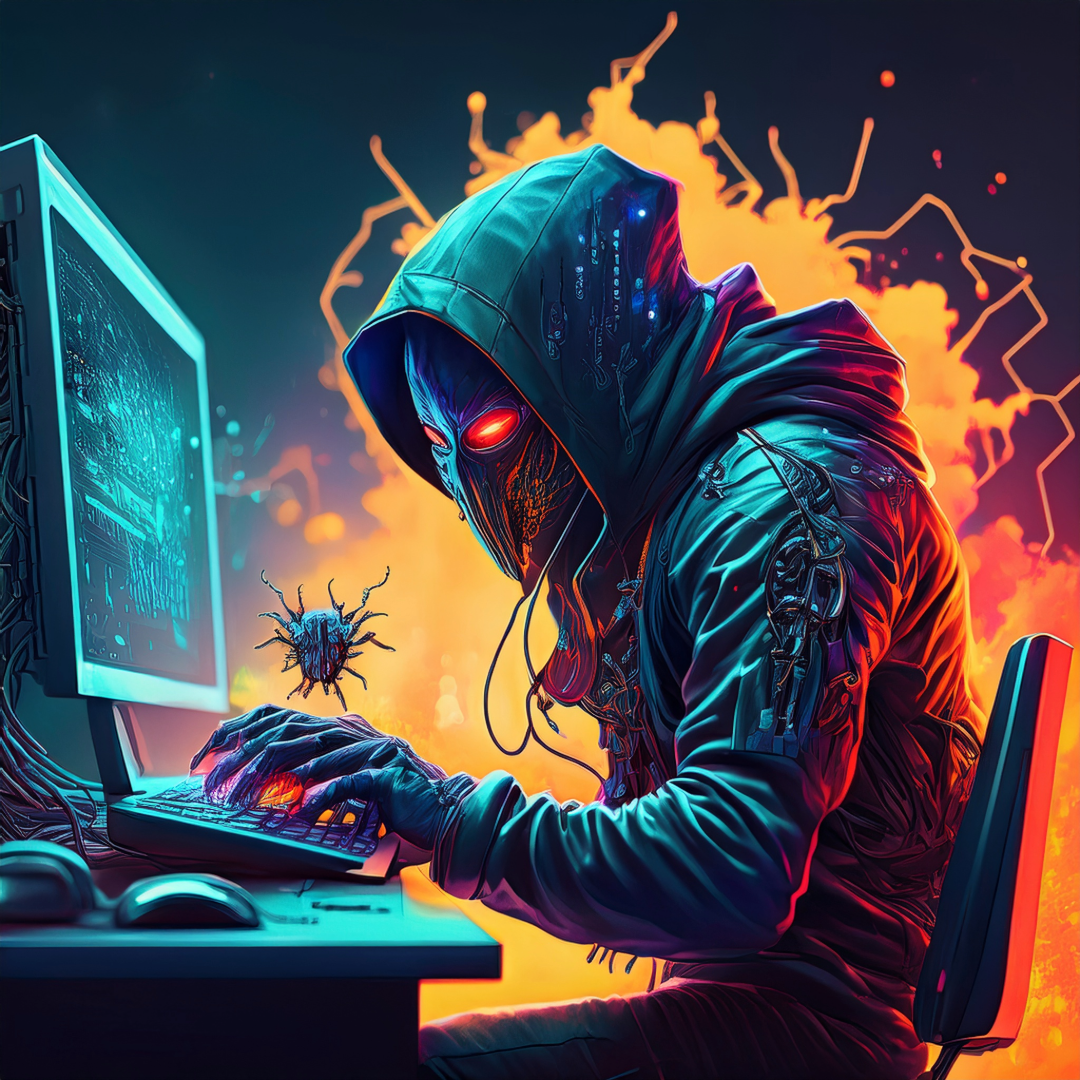Top 10 Cybersecurity Tips Every Gamer and Streamer Needs to Know
Introduction
The Thrill vs. The Threat: Gaming & Streaming in 2025
The worlds of online gaming and live streaming continue to captivate millions, offering unparalleled entertainment, community connection, and even lucrative career paths. Whether battling opponents in a fast-paced FPS, exploring vast virtual worlds, or sharing gameplay with a global audience, the digital realm provides endless thrills. However, this vibrant ecosystem is also a hunting ground for cybercriminals. The very platforms that bring joy and connection are increasingly targeted, with gamers and streamers facing a unique and evolving set of cybersecurity threats. Reports indicate a dramatic rise in attacks specifically aimed at the gaming industry, including a staggering 94% increase in web application attacks between Q1 2023 and Q1 2024, surpassing 1 billion attacks in June 2024 alone. Layer 7 DDoS attacks, targeting application availability, saw a similar 94% year-over-year surge , and attacks targeting younger gamers jumped 30% in the first half of 2024 compared to the latter half of 2023.
Why Cybersecurity Matters More Than Ever for Gamers & Streamers
For gamers and streamers, the stakes of a cyberattack are incredibly high. It’s not just about losing access to a favorite game; it’s about protecting valuable digital assets, personal information, financial security, and even physical safety. Account hijacking can mean the loss of accounts containing hundreds or thousands of dollars worth of virtual items, skins, and invested time. Compromised accounts often store personal and financial data, leading directly to financial fraud or identity theft. The public nature of streaming adds another layer of risk, with doxxing (maliciously publishing private information) and swatting (making false emergency calls to incite a police raid) posing real-world dangers fueled by online data exposure. For streamers, a security incident can also cause significant reputational damage. With the global cost of cybercrime projected to hit $10.5 trillion annually by 2025 , understanding and mitigating these risks is no longer optional. ### Your Essential Security Playbook: 10 Tips to Stay Safe Navigating this complex threat landscape requires vigilance and proactive defense. This guide serves as an essential security playbook, outlining ten crucial, actionable cybersecurity tips specifically tailored for the gaming and streaming community. By understanding the threats and implementing these practices, individuals can significantly reduce their vulnerability and continue to enjoy their digital passions safely. ## The Top 10 Tips ### 1. Build Unbreakable Walls: Passwords & Password Managers * **Why it Matters**: Gaming and streaming accounts – platforms like Steam, Twitch, Epic Games, Battle.net, individual game accounts, and associated email addresses – are treasure troves for cybercriminals. They often contain linked payment methods , personal information , extensive game progress representing countless hours, and virtual items or skins that can hold significant real-world monetary value. Account takeover (ATO) is a primary threat vector , frequently succeeding due to weak, easily guessable, or reused passwords. If a password used on one site is compromised in a data breach, attackers will try it on other platforms (credential stuffing), meaning one weak link can lead to multiple account compromises. The convergence of personal data, financial information, and valuable digital assets within these accounts elevates password security from a mere inconvenience to a critical necessity for protecting both tangible and intangible investments. The burgeoning market for digital gaming assets further amplifies the financial risk associated with compromised accounts. * **Actionable Steps**: * **Complexity is Key**: Passwords should be long – aim for at least 12-15 characters – and incorporate a random mix of uppercase letters, lowercase letters, numbers, and symbols (!@#$%^&*). Avoid common dictionary words, names, birthdays, sequential numbers (“123456”), or keyboard patterns (“qwerty”). The longer and more random, the harder it is to crack. * Uniqueness is Non-Negotiable: Crucially, every single online account must have its own unique, strong password. This compartmentalizes the damage if one account’s credentials are leaked; attackers won’t be able to use those credentials to access other accounts. * Embrace Password Managers: Generating and remembering dozens, if not hundreds, of unique, complex passwords is a task beyond human capability. Employ a reputable password manager application. These tools securely generate highly complex passwords, store them in an encrypted vault, and can automatically fill them into login forms. Leading options include NordPass, Dashlane, RoboForm, Keeper, and Bitwarden, many offering robust free versions or affordable premium plans.
2. Activate Your Force Field: Multi-Factor Authentication (MFA/2FA)
- Why it Matters: Passwords alone are not enough. They can be phished, guessed, cracked, or leaked in data breaches. Multi-factor authentication (MFA), often referred to as two-factor authentication (2FA), adds a mandatory second verification step during login. This typically requires possessing a physical item (like a smartphone) or biometric trait, in addition to knowing the password. This significantly increases the difficulty for unauthorized individuals to access an account, even if they have managed to obtain the password. It acts as a powerful deterrent against common automated attacks like credential stuffing, which rely solely on compromised password lists. MFA forces attackers to overcome an additional, often time-sensitive, hurdle that automated tools cannot easily bypass.
- Actionable Steps:
- Enable Everywhere Possible: Activate MFA/2FA on every important online account that offers it. This includes primary gaming platforms (Steam , Epic Games, Battle.net), streaming platforms (Twitch ), communication tools (Discord ), email accounts (especially the one linked to your gaming/streaming profiles ), social media, and any financial or payment services.
- Understand the Methods: MFA typically works by requiring a time-based one-time password (TOTP) generated by an authenticator app on a smartphone (e.g., Google Authenticator, Authy, Duo Mobile ), a code sent via SMS text message , a push notification to approve on a trusted device , or the use of a physical hardware security key (like a YubiKey).
- Authenticator Apps Preferred: While SMS-based 2FA is significantly better than no MFA, it is vulnerable to SIM swapping attacks (where an attacker tricks a mobile carrier into transferring a victim’s phone number to a device they control). Authenticator apps or hardware keys are generally considered more secure options. Platforms like Twitch and Steam strongly support authenticator apps.
- Save Backup Codes Securely: When setting up MFA, platforms usually provide one-time recovery or backup codes. These are essential for regaining access if the primary MFA device is lost or inaccessible. Store these codes securely offline (e.g., printed and stored safely) or within the encrypted notes section of a password manager. Do not store them as plain text on the device itself.
3. Dodge the Bait: Recognizing and Avoiding Phishing & Scams
- Why it Matters: Phishing attacks are a pervasive and highly successful threat vector, frequently targeting the specific interests and interactions of gamers and streamers. Attackers craft deceptive emails, direct messages (on Discord, Twitch Whispers, etc.), fake websites, and in-game communications that convincingly impersonate legitimate entities like game developers, platform support staff (Steam, Twitch), potential sponsors, or even fellow players. The goal is typically to steal login credentials , financial details (credit card numbers, bank info) , or other sensitive personal data , or to trick victims into downloading malware. The increasing sophistication of AI tools is making these scams harder to distinguish from genuine communications. The unique ecosystem of gaming—with its focus on virtual item trading, community interaction, and influencer marketing—provides fertile ground for tailored phishing lures that exploit these specific desires and trust dynamics.
- Actionable Steps:
- Cultivate Healthy Skepticism: Approach unsolicited messages, emails, friend requests, and offers with inherent caution. If an offer promises free valuable items, in-game currency, or an unbelievable sponsorship deal, it is highly likely a scam.
- Verify Sender Identity: Scrutinize email sender addresses – look for subtle misspellings or unusual domain names (e.g.,
support@steam-logon.cominstead ofsupport@steampowered.com). Hover the mouse cursor over links (without clicking) to preview the actual destination URL in the browser status bar. Remember, legitimate companies will almost never ask for passwords, MFA codes, or full credit card numbers via email or direct message. If in doubt, contact the company or individual through official, known channels (e.g., navigating to the official support website manually). - Inspect Links & Websites Carefully: Always check the URL of a website before entering login credentials or personal information. Look for the
https://prefix and padlock icon, but be aware that even phishing sites can obtain these certificates. Pay close attention to the domain name for misspellings or extra characters designed to mimic legitimate sites (e.g.,twitch-support.netinstead oftwitch.tv). Avoid logging in via links sent in emails or messages; always navigate to the official website directly by typing the address into the browser or using a trusted bookmark. - Resist Urgency Tactics: Phishing scams often employ language designed to create panic or urgency (e.g., “Your account has been compromised, log in immediately!”, “Limited-time offer, click now!”). This is intended to bypass critical thinking. Take a moment to pause, evaluate the request, and verify its legitimacy before acting.
- Safe Item Trading Practices: When trading virtual items, exclusively use the official trading systems provided by the platform (like Steam Trade Offers). Be extremely wary of users asking to conduct trades through third-party websites, Discord bots, or direct payment methods like PayPal, as these offer little to no protection against scams. Check the market value of items being traded and examine the other user’s profile for reputation, trade history, and signs of legitimacy. Ignore offers involving “item duplication” – they are always scams.
- Verify Sponsorship Offers: If receiving an unsolicited sponsorship offer, do not reply directly or click links/download attachments in the initial email. Independently find the official contact information for the company’s marketing or partnership department on their website and reach out to verify the offer’s authenticity. Be particularly suspicious of requests to download software (“viewer,” “game client,” “contract viewer”) or password-protected archives, as these often contain malware.
4. Secure Command Central: Your Home Network
- Why it Matters: The home Wi-Fi router acts as the central hub connecting all internet-enabled devices – gaming PCs, consoles, laptops, smartphones, smart TVs, and IoT gadgets – to the internet. If this gateway is compromised, every device connected to it becomes vulnerable. Attackers could potentially intercept sensitive data (like passwords or financial information), redirect traffic to malicious sites, infect devices with malware, use the network for illegal activities, or launch attacks against others (including DDoS attacks) from the victim’s IP address. Securing the router is a foundational security step, yet it’s often overlooked by users who focus solely on securing individual devices. A weak router undermines all other security efforts on the network.
- Actionable Steps:
- Change Default Router Credentials: The first and most crucial step is to change the default administrator username and password required to access the router’s configuration settings. Default credentials for various router models are widely available online and are a common target for attackers. Choose a strong, unique password and store it securely in a password manager.
- Enable Strong Wi-Fi Encryption: Ensure the Wi-Fi network uses the strongest encryption protocol available. WPA3 is the current standard and offers superior security. If WPA3 is not supported by the router or some older devices, use WPA2 with AES encryption (WPA2-PSK AES). Avoid outdated and insecure protocols like WEP and WPA, or modes using TKIP, as they are easily compromised. Use a strong, unique password (passphrase) for the Wi-Fi network itself.
- Keep Router Firmware Updated: Router manufacturers release firmware updates to fix bugs and patch security vulnerabilities. Regularly check the manufacturer’s website or the router’s administration interface for available updates and install them promptly. Enable automatic updates if the router supports this feature. Running outdated firmware leaves known security holes open.
- Disable Risky Features: Many routers come with features enabled by default that can pose security risks. Disable Wi-Fi Protected Setup (WPS), as its PIN mechanism is notoriously vulnerable to brute-force attacks. Disable Universal Plug and Play (UPnP) unless absolutely necessary for specific applications (like some online games or P2P software), as it can allow devices on the network to automatically open ports to the internet, potentially exposing them to external threats. Disable remote administration/management features if there is no need to access the router’s settings from outside the home network.
- Utilize a Guest Network: If the router supports it, enable a separate guest Wi-Fi network. Connect visitors’ devices and potentially less secure smart home gadgets (speakers, lights, thermostats) to this network. This isolates them from the main network where sensitive devices like gaming PCs and laptops reside, limiting the potential damage if a guest device or IoT gadget is compromised.
- Consider Using a VPN (Even at Home): While primarily known for public Wi-Fi protection, a VPN can add a layer of privacy and security even on a home network. It encrypts all internet traffic, preventing potential eavesdropping (even from an ISP), and masks the user’s real IP address. This IP masking can be particularly beneficial for gamers and streamers as a defense against targeted DDoS attacks. Reputable VPN providers often recommended for gaming include NordVPN, ExpressVPN, and Surfshark.
5. Control Your Data: Privacy Settings & Digital Footprint
- Why it Matters: In the interconnected world of online gaming and streaming, personal information can inadvertently leak through various channels. Oversharing details, whether through public profiles, in-game chat, live streams, or simply having lax privacy settings on platforms, creates significant risks. This exposed information can be aggregated by malicious actors for purposes ranging from targeted phishing and social engineering attacks to severe real-world harassment like doxxing (publishing private information like addresses or phone numbers) and swatting (making false emergency reports to trigger a police response at the victim’s location). Identity theft is another major concern, where stolen personal data is used for fraudulent activities. Streamers, due to their public visibility, are particularly vulnerable to these threats, making proactive privacy management a critical component of personal security, extending beyond digital comfort into physical safety.
- Actionable Steps:
- Audit Platform Privacy Settings: Make it a regular habit to thoroughly review and configure the privacy settings on all relevant platforms. This includes gaming clients like Steam (controlling profile visibility, friends list, inventory, game details ), streaming platforms like Twitch (managing whispers, gift visibility, subscription status ), communication apps like Discord (controlling DMs from server members, friend requests ), and general social media accounts. Set visibility to “Private” or “Friends Only” wherever possible, limiting exposure to trusted contacts.
- Minimize Publicly Shared Information: Be extremely cautious about the personal information shared publicly. Avoid using real names, exact birthdates, specific locations (city/state is often too much), or other easily identifying details in usernames, public profiles, or bios. During streams or in voice chats, be mindful of accidentally revealing personal details verbally or visually (e.g., mail showing an address, reflections in glasses, identifiable landmarks outside a window, school/work uniforms or logos). Avoid linking gaming/streaming accounts to personal social media unless absolutely necessary.
- Consider Separate Online Identities: For streamers or those highly active in online communities, using distinct usernames, email addresses, and online personas for gaming/streaming activities compared to personal life can help compartmentalize information and reduce the risk of cross-platform doxxing.
- Control Inbound Communication: Utilize platform features to restrict who can initiate contact. Block direct messages (Whispers on Twitch, DMs on Discord) and friend requests from users who aren’t already friends or in shared communities/servers. Block specific users who exhibit harassing or suspicious behavior.
- Secure Associated Domains/Websites: If operating a personal website or domain related to streaming or gaming activities, use WHOIS privacy protection services offered by the domain registrar. This prevents personal contact information (name, address, phone number) from being publicly listed in the domain registration database.
- Perform Regular Self-Searches: Periodically use search engines to look for your usernames, real name, and other potentially identifying information to understand what data about you is publicly accessible. Identify information exposed on data broker websites and follow their procedures (or use removal services) to request its deletion.
6. Patch Your Armor: Keep Software Updated
- Why it Matters: Software is complex, and vulnerabilities – bugs that can be exploited by attackers – are discovered constantly in operating systems (like Windows or macOS), web browsers, games, streaming applications, drivers, and other programs. These vulnerabilities serve as open doors for malware (including ransomware, spyware, and keyloggers) and hackers seeking unauthorized access. Software developers release updates and patches to fix these security holes. Running outdated software leaves these known vulnerabilities unaddressed, making the system an easy target for automated attacks that scan the internet for unpatched systems. Timely patching is therefore a fundamental and highly effective proactive security measure.
- Actionable Steps:
- Enable Automatic Updates: The most reliable way to stay updated is to enable automatic updates whenever the option is available. Configure the operating system (Windows Update, macOS Software Update), web browsers (Chrome, Firefox, Edge), game clients (Steam, Epic Games Store), and security software to download and install updates automatically.
- Check Manually for Other Software: Not all software updates automatically. Regularly check for updates for:
- Games installed outside major platforms.
- Graphics card drivers (Nvidia, AMD, Intel) and other hardware drivers.
- Streaming software (OBS Studio, Streamlabs Desktop) and their plugins.
- Other frequently used applications.
- Install Updates Promptly: Don’t postpone or ignore update notifications. Install security patches as soon as they become available to minimize the window of vulnerability. Restart the system when required for updates to take full effect.
- Remove Unused Software: Uninstall applications, browser extensions, and game mods that are no longer needed. Outdated, unused software can still harbor vulnerabilities and represents an unnecessary attack surface. Regularly review installed programs and browser extensions and remove clutter.
7. Venture Carefully: Using Public Wi-Fi Safely
- Why it Matters: Public Wi-Fi hotspots found in cafes, airports, hotels, libraries, and other public spaces offer convenience but pose significant security risks. These networks are often unencrypted or use weak security, making it relatively easy for anyone else connected to the same network to intercept the data being transmitted (eavesdropping). Attackers can capture login credentials, financial information, personal messages, or browsing activity. They can also perform Man-in-the-Middle (MitM) attacks, intercepting and potentially altering communication, or set up fake “evil twin” hotspots that mimic legitimate ones to trick users into connecting. For gamers or streamers needing to access accounts or manage sensitive information while traveling or away from home, treating all public Wi-Fi networks as potentially hostile environments is crucial.
- Actionable Steps:
- Avoid Sensitive Activities if Possible: The safest approach is to avoid logging into important accounts (gaming platforms, email, banking, social media) or conducting any sensitive transactions (like online purchases) while connected to public Wi-Fi. Wait until a trusted, secure network (like home Wi-Fi or a cellular data connection) is available.
- ALWAYS Use a VPN: If using public Wi-Fi is unavoidable, always connect through a reputable Virtual Private Network (VPN) before accessing any websites or online services. A VPN creates an encrypted tunnel for all internet traffic, scrambling the data so that even if intercepted on the public network, it remains unreadable to eavesdroppers. Ensure the VPN is connected and active for the entire duration of the public Wi-Fi session.
- Disable Automatic Connections: Configure mobile devices and laptops to not automatically connect to known or open Wi-Fi networks. Manually select and connect to networks only when needed.
- Forget Networks After Use: Once finished using a public Wi-Fi network, instruct the device to “forget” the network. This prevents it from automatically reconnecting if in range again later and removes it from the list of preferred networks.
- Verify Network Names: Be cautious of network names (SSIDs). Attackers might create hotspots with names similar to legitimate ones (e.g., “Hotel Guest WiFi” vs. “Hotel Guest Wi-Fi Free”). If unsure, ask staff for the correct network name.
- Prioritize HTTPS (but rely on VPN): While browsing, ensure websites use HTTPS (indicated by a padlock icon in the address bar). However, remember that even malicious sites can use HTTPS. HTTPS only encrypts traffic between the browser and that specific website; it doesn’t protect other traffic or prevent eavesdropping on the local network itself. A VPN provides much broader protection on public Wi-Fi.
8. Protect Your Broadcast: Streaming Software & Key Security
- Why it Matters: For streamers, the software and credentials used for broadcasting (like OBS Studio, Streamlabs Desktop, and platform stream keys) are mission-critical. Compromise in this area can have severe consequences. An attacker gaining access to a stream key can hijack the channel, broadcasting malicious, offensive, or illegal content under the streamer’s identity, potentially leading to platform bans and severe reputational damage. Access to streaming software accounts (like Streamlabs) could expose donation information, settings, or linked accounts. Furthermore, vulnerabilities in the streaming software itself, or more commonly in third-party plugins, themes, or overlays, can be exploited to install malware, steal information, or disrupt streams. Stream security, therefore, involves protecting not just the platform account but also the entire toolchain used for broadcasting.
- Actionable Steps:
- Guard Your Stream Key Like a Password: The stream key provided by platforms like Twitch or YouTube is the authorization token for broadcasting to the channel. It must be kept absolutely confidential. Never display it on stream, share it in chats or DMs, or store it in easily accessible locations. If there’s any suspicion it might have been exposed, immediately go to the streaming platform’s dashboard and regenerate a new key.
- Secure Associated Accounts: Apply strong, unique passwords and enable MFA (see Tips 1 & 2) for all accounts related to streaming. This includes the primary streaming platform account (Twitch, YouTube), any account used for the streaming software itself (e.g., Streamlabs login), and accounts for linked services (donation platforms, alert systems, bot accounts).
- Vet Third-Party Add-ons Carefully: Exercise extreme caution when installing plugins, custom themes, overlay packages, or scripts for OBS Studio or Streamlabs Desktop. Malware can be disguised as helpful tools or attractive visual enhancements. Only download add-ons from the official software websites, trusted developer repositories (like the official OBS forums/plugins section), or highly reputable sources. Research developers and read user reviews before installing any third-party component. Avoid downloading from random websites or Discord servers.
- Keep Streaming Software and Plugins Updated: Just like any other software, streaming applications and their plugins receive updates that often include security fixes (see Tip 6). Regularly check for and install updates for OBS, Streamlabs, and any installed add-ons to patch potential vulnerabilities.
- Secure the Streaming Environment (Physical & Digital): Pay close attention to what is visible within the camera’s view during a stream. Avoid showing personal documents, mail with addresses, reflections revealing sensitive information, or easily identifiable landmarks outside windows. Be meticulous when using screen sharing; configure scenes in OBS/Streamlabs to only capture specific application windows rather than the entire desktop, reducing the risk of accidentally displaying sensitive information from other applications, notifications, or file explorers.
9. Read the Room: Resisting Social Engineering
- Why it Matters: Social engineering is a powerful attack method because it targets the human element, often bypassing sophisticated technical security measures. Attackers manipulate psychological triggers – exploiting trust, authority, urgency, fear, curiosity, or helpfulness – to trick individuals into performing actions or divulging sensitive information. In the gaming and streaming context, this might involve impersonating platform support staff, fellow gamers needing help, game developers, potential sponsors, or even friends whose accounts have been compromised. The goal could be to obtain login credentials, MFA codes, personal details for doxxing, financial information, or to convince the target to click a malicious link or disable their security software. Social engineering is reportedly involved in a vast majority of security breaches. The interactive and community-driven nature of gaming and streaming provides fertile ground for these tactics, as attackers can leverage shared interests and established trust dynamics.
- Actionable Steps:
- Recognize Common Tactics: Familiarize yourself with typical social engineering techniques. These include:
- Pretexting: Creating a believable (but false) scenario or identity to justify a request for information or action (e.g., “I’m from Steam support investigating suspicious activity on your account…”).
- Baiting: Dangling an enticing offer (free game keys, rare items, high-paying sponsorship) to lure victims into a trap.
- Quid Pro Quo: Offering supposed help or a service in exchange for information or access (e.g., “Let me remote into your PC to fix the issue,” “Give me your login so I can check your item”).
- Urgency/Fear: Creating pressure by claiming immediate action is needed to avoid negative consequences (account suspension, legal trouble, missed opportunity).
- Verify Independently (Out-of-Band): If contacted unexpectedly by someone claiming to be from support, a company, or even a friend asking for help or information, do not trust the communication channel they initiated contact through (email, DM, phone call). Independently verify their identity and the request using a known, trusted contact method. For example, if “Steam Support” emails, go to the official Steam support website manually and initiate contact there. If a “friend” messages asking for money or account details, call them on the phone number you already have for them. Never follow instructions like “Contact admin XYZ on Discord to resolve this issue” provided by the suspicious party.
- Question Information Requests: Be inherently suspicious of any unsolicited request for login credentials (usernames, passwords), MFA codes, personal information (full name, address, phone number, date of birth), or financial details (credit card numbers, bank account info). Legitimate organizations and platforms will almost never ask for this information via email, chat, or unsolicited calls. Never share MFA codes with anyone.
- Think Before Acting: Social engineering often aims to provoke an immediate, emotional reaction (clicking a link, downloading a file, providing information). Consciously pause, take a breath, and critically evaluate the situation before taking any action, especially when feeling pressured or rushed.
- Trust Your Instincts: If a conversation, offer, or request feels strange, suspicious, or too good to be true, it probably is. It is always safer to err on the side of caution, refuse the request, and disengage from the interaction than to risk becoming a victim.
- Recognize Common Tactics: Familiarize yourself with typical social engineering techniques. These include:
10. Prepare for Respawn: The Power of Backups
- Why it Matters: Data loss is an unfortunate reality in the digital world. Hardware components like hard drives and SSDs can fail unexpectedly. Malware, particularly destructive strains like ransomware, can encrypt or delete files, holding them hostage. Accounts can be compromised and data wiped. Accidental deletion or file corruption can also occur. For gamers and streamers, losing data can mean losing potentially irreplaceable progress (hundreds or thousands of hours in game saves ), painstakingly configured stream settings and assets (scenes, overlays, alerts ), or vital personal files (documents, photos, creative work). Backups are the essential safety net, providing a means to restore lost data and recover from such incidents with minimal disruption and loss. They offer resilience against a wide array of common problems.
- Actionable Steps:
- Identify Critical Data: Determine which data is most important and would cause significant loss or inconvenience if permanently gone. Key categories for gamers/streamers include:
- Game Save Files: Check if games utilize cloud saving features (like Steam Cloud). For those that don’t, or as an extra precaution, identify the local save file locations (PCGamingWiki, game forums, and developer websites are good resources ) for manual backup.
- Streaming Software Configuration: This includes profiles, scene collections, custom overlays, alert settings, and potentially chatbot configurations within software like OBS Studio or Streamlabs Desktop.
- Personal Files: Any important documents, photos, videos, creative projects, or other irreplaceable data stored on the computer.
- Follow the 3-2-1 Backup Strategy: A robust backup strategy involves having at least 3 copies of important data, stored on 2 different types of storage media, with 1 copy located offsite (physically separate from the original location).
- Practical Example: The original files on the PC’s internal drive (Copy 1), a regular backup to an external USB hard drive (Copy 2, different media), and another backup to a secure cloud storage service (Copy 3, offsite).
- Implement Backup Methods:
- Game Saves: Rely on cloud saves where available but consider manual backups for critical games. Copy save folders to an external drive or cloud storage periodically. Steam’s backup feature primarily targets game installation files, not always saves/configs for third-party games. Tools like Wondershare UBackit or simple scheduled file copies can automate this.
- Stream Settings: Use the export functions within OBS Studio or Streamlabs to save profiles and scene collections as
.jsonor similar files. Store these exported files with other backups. Consider periodically backing up the entire application settings folder (accessible via “File” > “Show Settings Folder” in OBS ). - Personal Files: Utilize built-in OS backup tools (Windows File History, macOS Time Machine) or reputable third-party backup software (like Acronis, Macrium Reflect Free, or cloud sync services with versioning like Dropbox, Google Drive, OneDrive) to automate regular backups of user folders (Documents, Pictures, Videos, etc.) to an external drive and/or cloud storage.
- Automate and Schedule: Manual backups are easily forgotten. Use software that allows scheduling automatic backups (daily, weekly) to ensure consistency.
- Test Your Backups: Periodically verify that backups are completing successfully and, crucially, test the restoration process. Try restoring a few non-critical files from different backups (external drive, cloud) to ensure the data is accessible and uncorrupted. A backup that cannot be restored is useless.
- Identify Critical Data: Determine which data is most important and would cause significant loss or inconvenience if permanently gone. Key categories for gamers/streamers include:
Conclusion
Staying Safe in the Game: A Quick Recap
The digital arenas of gaming and streaming offer immense enjoyment and opportunity, but they are not without their perils. Navigating this landscape safely requires a proactive approach to cybersecurity. This involves building strong digital defenses through robust password practices and multi-factor authentication, maintaining constant vigilance against pervasive phishing and social engineering tactics, securing the technical environment including home networks, public Wi-Fi connections, and streaming tools, diligently keeping software updated, managing online privacy to minimize exposure, and preparing for the unexpected with regular data backups.
Level Up Your Security: Final Thoughts & Encouragement
Cybersecurity is not a one-time achievement but an ongoing commitment – a continuous process of learning, adapting, and applying best practices. The threats faced by gamers and streamers will continue to evolve, particularly with the increasing sophistication driven by AI. However, by consistently implementing the ten tips outlined in this guide, individuals can significantly strengthen their defenses, reduce their vulnerability to common attacks, and protect their valuable accounts, data, and personal safety. Investing time in security allows gamers and streamers to focus on what they love – the game, the stream, the community – with greater confidence and peace of mind. Level up your security posture today.












Add comment